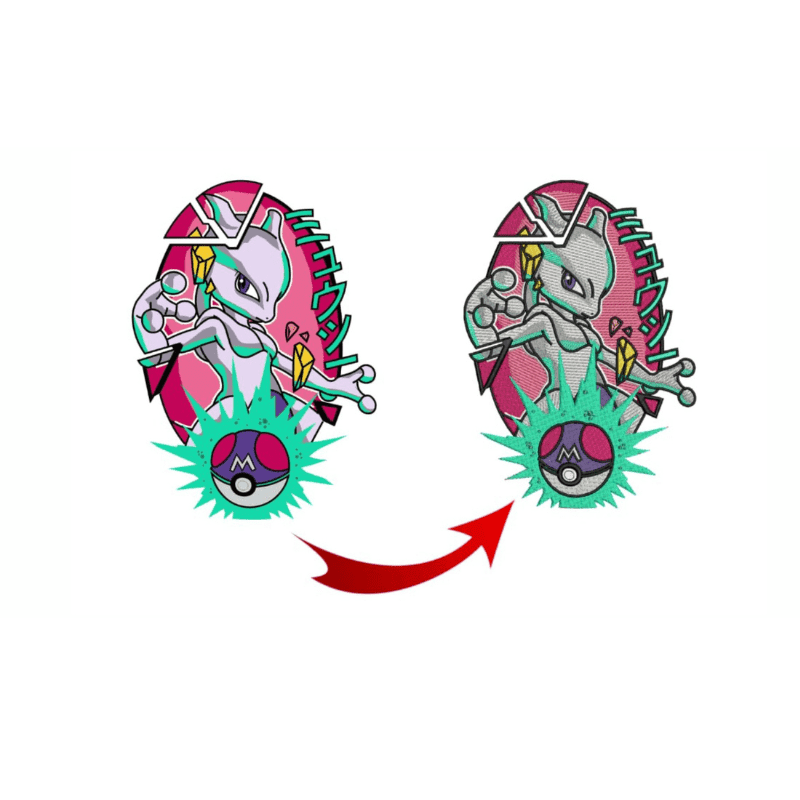Premium Digitizing for Embroidery: Expert Craftsmanship
Grasping the Embroidery Digitizing Process: Your Ultimate Guide
Embroidery digitizing is a meticulous craft that needs accuracy and expertise to translate complex layouts right into electronic formats for maker embroidery. As artisans begin on this trip to understand the needlework digitizing process, a thorough understanding of the essentials establishes the structure for excellence. Nevertheless, past the primary expertise exists a world of innovative software, specialized devices, and nuanced techniques waiting to be explored. By diving into the subtleties of digitizing, one can open a world of imaginative opportunities and elevate their embroidery tasks to brand-new elevations.

Understanding Needlework Digitizing Fundamentals
Embroidery digitizing essentials create the structure upon which complex styles are equated into machine-readable layouts for exact stitching. This initial action in the needlework digitizing procedure is crucial for making certain that the last embroidered item is a devoted depiction of the initial style. Understanding needlework digitizing essentials involves grasping essential ideas such as stitch types, sew direction, thickness, rug, and pull settlement.
Sew kinds play a crucial function in establishing the aesthetic and textural result of the embroidered style. By selecting the proper stitch kind, whether it be satin, fill, or running stitch, digitizers can attain the wanted impact and boost the overall quality of the needlework. Additionally, sew instructions affects the flow and measurement of the layout, while thickness figures out the spacing and coverage of the stitches.
Moreover, rug sewing gives security to the design by safeguarding the material and protecting against distortion during the needlework procedure. Pull compensation is one more vital consideration to neutralize the all-natural propensity of textile to agreement when sewn. Grasping these embroidery digitizing essentials is fundamental for creating professional-quality embroidered products.
Picking the Right Digitizing Software Program
Choosing the ideal digitizing software program is a critical decision that dramatically impacts the performance and quality of the embroidery digitizing procedure. Digitizing for Embroidery. When choosing the ideal digitizing software program, it is important to take into consideration elements such as the intricacy of styles you plan to develop, the user-friendliness of the software program, the degree of client support supplied, and the compatibility with your embroidery maker
There are different digitizing software program alternatives readily available out there, varying from standard programs for beginners to sophisticated software application for expert digitizers. Some popular choices consist of Wilcom EmbroideryStudio, Hatch Needlework Software Program, and PulseID. These software offer a vast range of devices and attributes to help you develop elaborate styles effortlessly.
Prior to choosing, it is recommended to explore the different software application options via cost-free trials or demos to identify which one best suits your needs. Furthermore, reading reviews and seeking referrals from experienced digitizers can supply beneficial insights right into the staminas and weaknesses of each software application bundle (Digitizing for Embroidery). By very carefully examining your requirements and contrasting the functions of various digitizing software, you can make an educated choice that enhances your embroidery digitizing workflow
Digitizing Devices and Strategies

Optimizing Design Settings for Needlework
Mastering the ins and outs of layout settings is fundamental in accomplishing optimal lead to the needlework digitizing procedure, building upon the structure laid by recognizing digitizing tools and strategies. When optimizing style setups for needlework, it is vital to consider variables such as stitch type, thickness, rug, draw payment, and enrollment. Stitch kind option influences the total feel and look of the style, with options like satin, fill, and running stitches providing different structures and impacts. Thickness refers to the spacing and density of stitches, affecting the style's additional hints insurance coverage and resilience. Proper underlay sewing gives stability and prevents material distortion, particularly for intricate layouts or on stretchy materials. Pull compensation changes for textile stretch during stitching, making sure exact design replication. Registration setups align different aspects of the style properly, maintaining total design integrity. By fine-tuning these design setups, embroiderers can improve the high quality and precision of their stitched developments.

Troubleshooting Common Digitizing Issues
When experiencing common digitizing problems throughout the embroidery process, it is necessary to comprehend the source and implement efficient solutions without delay. One usual trouble is stitch density problems, where stitches may be as well thick, creating the fabric to tighten, or also sporadic, causing voids in the style. Adjusting the stitch thickness setups in the digitizing software can help resolve this problem.
Another constant challenge is thread breaks throughout the embroidery procedure. This can take place due to different reasons such as wrong tension setups, boring needles, or making use of low-quality string. Guaranteeing correct maintenance of the embroidery equipment, including regular needle adjustments and stress adjustments, can reduce the event of thread breaks.
Furthermore, design enrollment errors can result in misaligned aspects within the embroidery layout. Inspecting the design alignment in the digitizing software application and making needed adjustments before sewing can assist in preventing this concern. By addressing these common have a peek at this site digitizing problems promptly and successfully, you can ensure a smoother needlework procedure and high-quality finished items.
Final Thought
Finally, grasping the embroidery digitizing process requires a solid understanding of the fundamentals, the appropriate choice of software application, and understanding of tools and techniques. Maximizing style settings and troubleshooting common digitizing issues are crucial action in making sure premium embroidery results. By complying with these steps diligently, one can attain accuracy and effectiveness in the digitizing process.